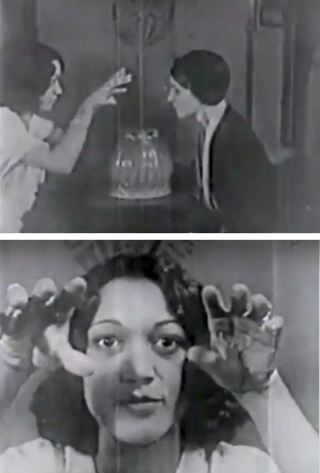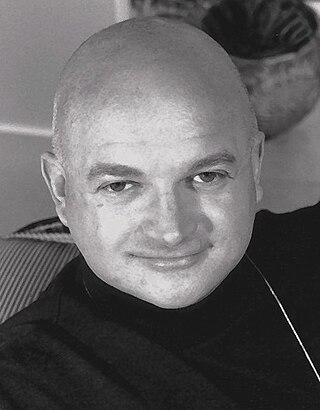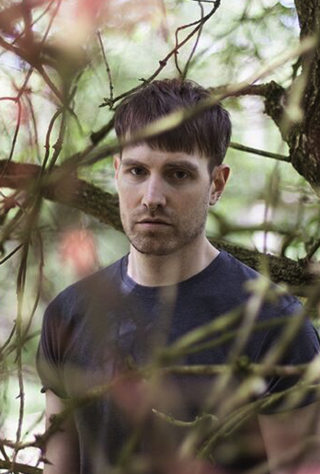Related Research Articles

Goldsmiths, University of London, legally the Goldsmiths' College, is a constituent research university of the University of London. It was originally founded in 1891 as The Goldsmiths' Technical and Recreative Institute by the Worshipful Company of Goldsmiths in New Cross, London. It was renamed Goldsmiths' College after being acquired by the University of London in 1904, and specialises in the arts, design, computing, humanities and social sciences. The main building on campus, known as the Richard Hoggart Building, was originally opened in 1844 and is the site of the former Royal Naval School.

Vilayanur Subramanian Ramachandran is an Indian-American neuroscientist. He is known for his wide-ranging experiments and theories in behavioral neurology, including the invention of the mirror box. Ramachandran is a distinguished professor in UCSD's Department of Psychology, where he is the director of the Center for Brain and Cognition.

Erotic hypnosis is a broad term for a variety of erotic activities involving hypnosis. Some erotic hypnosis is practiced in the context of BDSM relationships and communities. In addition, for some people hypnosis is inherently erotic, making it an example of a sexual fetish or paraphilia.

Daniel Tammet is an English writer and savant. His memoir, Born on a Blue Day (2006), is about his early life with Asperger syndrome and savant syndrome, and was named a "Best Book for Young Adults" in 2008 by the American Library Association's Young Adult Library Services magazine. His second book, Embracing the Wide Sky, was one of France's best-selling books of 2009. His third book, Thinking in Numbers, was published in 2012 by Hodder & Stoughton in the United Kingdom and in 2013 by Little, Brown and Company in the United States and Canada. His books have been published in over 20 languages.
Synesthesia is a neurological condition in which two or more bodily senses are coupled. For example, in a form of synesthesia known as grapheme-color synesthesia, letters or numbers may be perceived as inherently colored. Historically, the most commonly described form of synesthesia has been between sound and vision, e.g. the hearing of colors in music.
The phrase synesthesia in art has historically referred to a wide variety of artists' experiments that have explored the co-operation of the senses in the genres of visual music, music visualization, audiovisual art, abstract film, and intermedia. The age-old artistic views on synesthesia have some overlap with the current neuroscientific view on neurological synesthesia, but also some major differences, e.g. in the contexts of investigations, types of synesthesia selected, and definitions. While in neuroscientific studies synesthesia is defined as the elicitation of perceptual experiences in the absence of the normal sensory stimulation, in the arts the concept of synaesthesia is more often defined as the simultaneous perception of two or more stimuli as one gestalt experience. The usage of the term synesthesia in art should, therefore, be differentiated from neurological synesthesia in scientific research. Synesthesia is by no means unique to artists or musicians. Only in the last decades have scientific methods become available to assess synesthesia in persons. For synesthesia in artists before that time one has to interpret (auto)biographical information. For instance, there has been debate on the neurological synesthesia of historical artists like Kandinsky and Scriabin. Additionally, Synesthetic art may refer to either art created by synesthetes or art created to elicit synesthetic experience in the general audience.

Chromesthesia or sound-to-color synesthesia is a type of synesthesia in which sound involuntarily evokes an experience of color, shape, and movement. Individuals with sound-color synesthesia are consciously aware of their synesthetic color associations/perceptions in daily life. Synesthetes that perceive color while listening to music experience the colors in addition to the normal auditory sensations. The synesthetic color experience supplements, but does not obscure real, modality-specific perceptions. As with other forms of synesthesia, individuals with sound-color synesthesia perceive it spontaneously, without effort, and as their normal realm of experience. Chromesthesia can be induced by different auditory experiences, such as music, phonemes, speech, and/or everyday sounds.

Alex Hua Tian is an equestrian sportsman who competes in eventing for China.

Synesthesia or synaesthesia is a perceptual phenomenon in which stimulation of one sensory or cognitive pathway leads to involuntary experiences in a second sensory or cognitive pathway. For instance, people with synesthesia may experience colors when listening to music, see shapes when smelling certain scents, or perceive tastes when looking at words. People who report a lifelong history of such experiences are known as synesthetes. Awareness of synesthetic perceptions varies from person to person with the perception of synesthesia differing based on an individual's unique life experiences and the specific type of synesthesia that they have. In one common form of synesthesia, known as grapheme–color synesthesia or color–graphemic synesthesia, letters or numbers are perceived as inherently colored. In spatial-sequence, or number form synesthesia, numbers, months of the year, or days of the week elicit precise locations in space, or may appear as a three-dimensional map. Synesthetic associations can occur in any combination and any number of senses or cognitive pathways.

Richard E. Cytowic is an American neurologist and author who rekindled interest in synesthesia in the 1980s and returned it to mainstream science. He was nominated for the Pulitzer Prize for his New York Times Magazine cover story about James Brady, the Presidential Press Secretary shot in the brain during the assassination attempt on President Reagan. Cytowic’s writing ranges from textbooks and music reviews, to his Metro Weekly "Love Doctor" essays and brief medical biographies of Anton Chekhov, Maurice Ravel and Virginia Woolf. His work is the subject of two BBC Horizon documentaries, “Orange Sherbert Kisses” (1994) and “Derek Tastes of Earwax” (2014).

Christopher Boyle is a Fellow of the British Psychological Society, Senior Fellow of the Higher Education Academy and professor of inclusion and educational psychology at the University of Adelaide. He has previously been an association football referee who refereed in the Australian A-League and the Scottish Premier League. Boyle is a qualified psychologist working in the UK and in Australia. He has written extensively on subjects in psychology and inclusive education. He is a respected academic and has authored over 100 publications on these topics.

Berit Oskar Brogaard is a Danish–American philosopher specializing in the areas of cognitive neuroscience, philosophy of mind, and philosophy of language. Her recent work concerns synesthesia, savant syndrome, blindsight and perceptual reports. She is professor of philosophy and runs a perception lab at the University of Miami in Coral Gables, Florida. She was also co-editor of the Philosophical Gourmet Report until 2021.

Ideasthesia is a neuropsychological phenomenon in which activations of concepts (inducers) evoke perception-like sensory experiences (concurrents). The name comes from the Ancient Greek ἰδέα and αἴσθησις, meaning 'sensing concepts' or 'sensing ideas'. The notion was introduced by neuroscientist Danko Nikolić as an alternative explanation for a set of phenomena traditionally covered by synesthesia.

The ideomotor phenomenon is a psychological phenomenon wherein a subject makes motions unconsciously. Also called ideomotor response and abbreviated to IMR, it is a concept in hypnosis and psychological research. It is derived from the terms "ideo" and "motor". The phrase is most commonly used in reference to the process whereby a thought or mental image brings about a seemingly "reflexive" or automatic muscular reaction, often of minuscule degree, and potentially outside of the awareness of the subject. As in responses to pain, the body sometimes reacts reflexively with an ideomotor effect to ideas alone without the person consciously deciding to take action. The effects of automatic writing, dowsing, facilitated communication, applied kinesiology, and ouija boards have been attributed to the phenomenon.

Avishai Henik is an Israeli neurocognitive psychologist who works at Ben-Gurion University of the Negev (BGU). Henik studies voluntary and automatic (non-voluntary/reflexive) processes involved in cognitive operations. He characterizes automatic processes, and clarifies their importance, the relationship between automatic and voluntary processes, and their neural underpinnings. Most of his work involves research with human participants and in recent years, he has been working with Archer fish to examine evolutionary aspects of various cognitive functions.

Roi Cohen Kadosh is an Israeli-British cognitive neuroscientist notable for his work on numerical and mathematical cognition and learning and cognitive enhancement. He is a professor of Cognitive Neuroscience and the head of the School of Psychology at the University of Surrey.

Daniel Liam Glyn is a British music composer. He is most known for combining his music writing with his neurological condition, synaesthesia. Glyn's work has been heavily influenced by his unique way of visualising numbers, letters, and words in his mind with specific colours, and was the inspiration for his first album, Changing Stations. Glyn founded Caravan Boy Records in 2016.
Núria Sebastián Gallés is a cognitive scientist known for her work on bilingual language development and the impact of bilingualism on cognition. She is Professor of Psychology at Pompeu Fabra University where she heads the Speech Acquisition and Perception (SAP) Research Group. In 2012, Sebastián Gallés received the Narcis Monturiol Medal as recognition of her scientific contributions. She was elected Fellow of the British Academy in 2016.
Jonas Obleser is a German psychologist and neuroscientist.
References
- ↑ "Dr Devin Terhune". Goldsmiths, University of London. Retrieved 2020-02-12.
- ↑ "TAS Lab". 2020-02-12.
- ↑ Cox, Sarah (6 June 2016). "Time expands after blinking: research explores dopamine and time perception link". Goldsmiths, University of London. Retrieved 2020-02-12.
- ↑ Bhanoo, Sindya N. (2011-11-21). "Getting a Handle on Why 4 Equals Green". The New York Times. ISSN 0362-4331 . Retrieved 2020-02-12.
- ↑ Rose, Sam. "Do Microdoses of LSD Change Your Mind?" . Retrieved 2020-02-12.
- ↑ Wilson, Clare. "Best evidence yet that hypnotised people aren't faking it" . Retrieved 2020-02-12.
- ↑ Thomson, Helen. "Hyperactive neurons build brains in synaesthesia" . Retrieved 2020-02-12.
- ↑ Friday, 18 November 2011 Dani CooperABC (2011-11-18). "Synaesthesia sends visual cortex crazy" . Retrieved 2020-02-12.
{{cite news}}: CS1 maint: numeric names: authors list (link) - ↑ ORCID. "Devin Terhune (0000-0002-6792-4975)". orcid.org. Retrieved 2020-02-12.
- ↑ "Neurotree - Devin B. Terhune". neurotree.org. Retrieved 2020-02-12.
- ↑ "Devin Terhune". loop.frontiersin.org. Retrieved 2020-02-12.
- ↑ "Devin Terhune". lup.lub.lu.se. Retrieved 2020-02-12.
- ↑ "De wetenschap achter hypnose" (in Dutch).
{{cite magazine}}: Cite magazine requires|magazine=(help) - ↑ "Breaking Convention". breakingconvention.co.uk. Retrieved 2020-02-12.
- ↑ "How does hypnosis work?". 2019-05-02. Retrieved 2020-02-12.
- ↑ "Hypnosis may still be veiled in mystery – but we are starting to uncover its scientific basis". Pressconnects. Retrieved 2020-02-12.